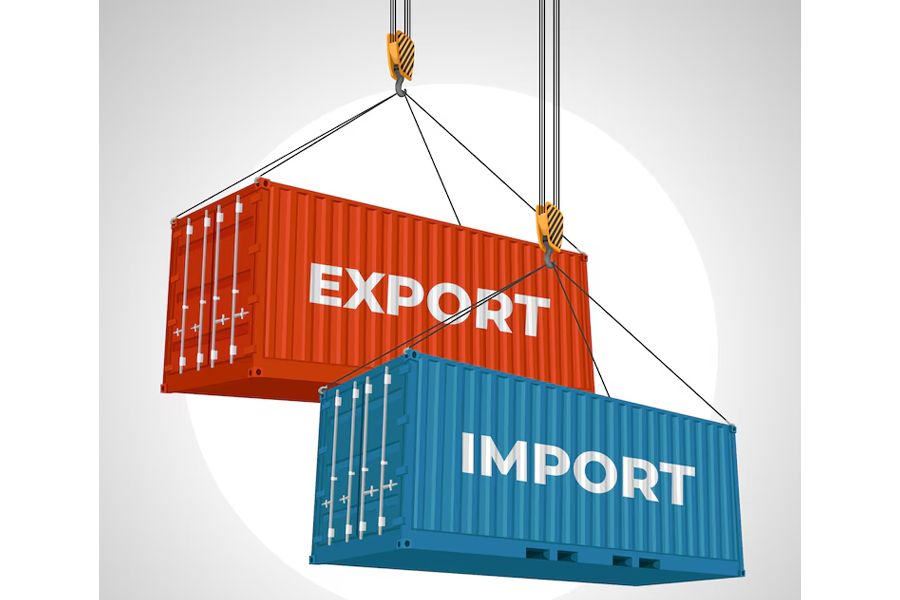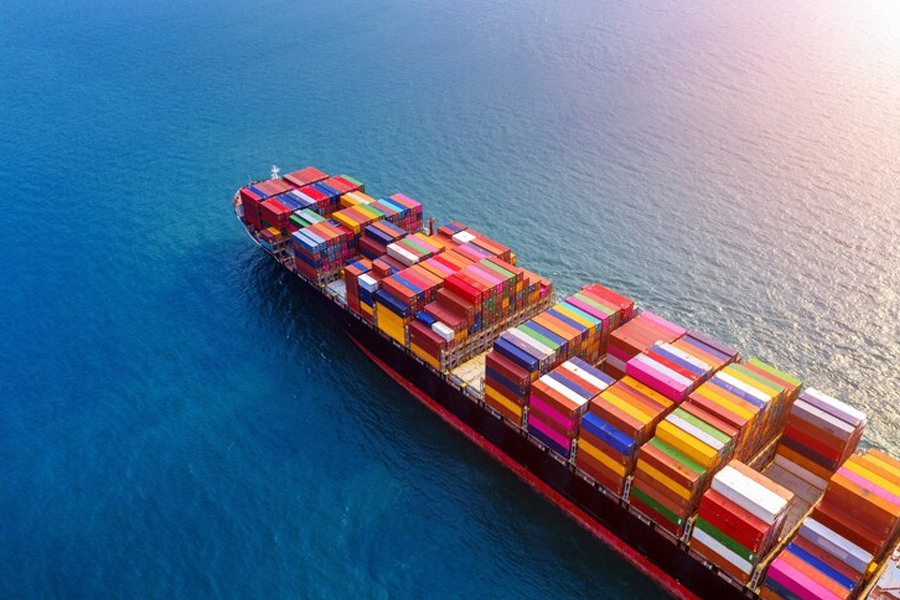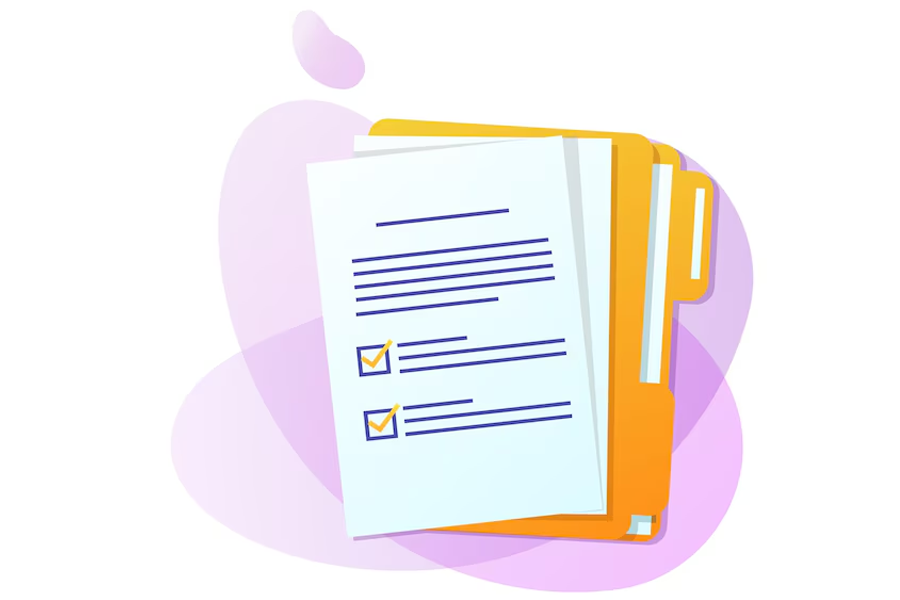The import-export business in India has been around for years, but it is still quite challenging for beginners to navigate independently. By 2028, India’s manufacturing export industry should reach 1 trillion in manufacturing exports, as per Mint report.
So, if you plan to start an export business, you can be assured that you have chosen a great path, but how do you go about it? What should your business strategy be?
You have come to the right place. Keep on reading as we go through all the details of how to start an import-export business in India.

What Is The Import-Export Business Landscape in India
There are many aspects to the import and export business in India, such as the regulatory frameworks that govern it.
First you must consider the Foreign Trade (Development and Regulation) Act of 1992, which regulates the import or export business to and from India.
The Foreign Exchange Management Act (FEMA) legislation, on the other hand, regulates cross-border transactions, investments, and remittances.
Of course, the Indian market is also influenced by global market dynamics. For example, these could be international market trends, geopolitical developments, and trade agreements.
Legal and Regulatory Requirements
This section expands the legal and regulatory requirements for cross-border e-commerce in India. The Foreign Trade Policy, 2023-28 governs the import-export company and oversees import procedures.
Compared to FTP 2015-20, the latest policy is focused on making things easier for exporters and importers by reducing the procedures.
See the step-by-step manual below.
Ease of Doing Business over Compliance
FTP 2023-28 focuses on simplifying the import procedures. However, you still need to get the necessary license as a business entity in India before shipping goods.
Licenses aren’t fixed for all kinds of businesses, so you should know the relevant ones for your industry to avoid delays or penalties at customs. This policy also promotes new trade areas like e-commerce exports and the development of export hubs.
Customs Clearance and Taxation
Customs clearance involves inspecting imported goods for duties and tax regulations set by the income tax department. If they are compliant, the customs authorities release the goods.
For clearance, you must provide documents like invoices, packing lists, and import licenses. Additionally, you may be required to pay duties, taxes, and customs fees before selling the goods in India.
Transport and Warehousing
After receiving the goods in India via the shipping company and clearing them, you should transport them from the port to a warehouse. You can use any transportation method, like road, rail, or sea freight.
Like the Foreign Trade policy, other policies regulate export transactions between an Indian export company and an overseas buyer. We have the Customs Act of 1962, which governs the levy and collection of customs duties on goods imported into or exported from India.

Relationships with Suppliers and Buyers
Building relationships with the target market is vital for awareness and a high conversion rate. But what about suppliers? Most people don’t know, but your supplier might be your secret to success.
82% of executives believe solid supplier relationships contribute to their company’s success. Budding new exporters and importers must recognize that building strong relationships with their suppliers can help cut costs and save time.
Below, we have highlighted the steps involved:
- Conduct Market Research: Perform market research to find customers and suppliers. You should attend trade fairs, exhibitions, and networking events for suppliers in foreign markets.
- Establish Clear Communication Channels: You should have a few suitable communication channels with them to import goods. You can limit it to email, phone calls, text messages, and in-person meetings so they recognize and attend to you faster. On the other hand, you need to open every communication possible for buyers to reach you.
- Build Mutual Trust and Reliability: Wondering how to be trustworthy to suppliers? Imagine your supplier had sent 400kg instead of 40 kilograms of goods. You have two choices. Keep mute and continue to sell the 400 kg or inform the supplier of the mistake. They would be grateful and start prioritizing you whenever you want to buy anything for them. Remember that the police could come knocking if the 360kg loss could be traced to you. The same applies if you want to export goods. Your buyers expect you to be transparent with pricing, payments, quality standards, and delivery schedules.
- Negotiate Fair and Competitive Terms: Negotiate terms like transportation charges with your suppliers and freight forwarders for your buyers. Other factors to consider include pricing, payment terms, order volumes, and delivery schedules, especially if it has long-term business potential.
- Provide Exceptional Customer Service: Address any complaint quickly and professionally, whether with your suppliers or buyers. Make your response personalized.
These steps are essential for building a relationship with customers and suppliers. The relationship is needed because you may never meet them physically, but you still want them to keep working with you.

Logistics and Supply Chain Management
Logistics and supply chain management are at the heart of your import-export company in India. Running a business without managing logistics and the supply chain is impossible. You are transporting goods from one country to another, so you must have a system to facilitate movement.
Below, we have shared actionable tips for logistic management in India:
- Understand Import-Export Regulations: You need to learn about all the regulations and customs procedures required for your import and export business. We’ve outlined the procedures later in this piece.
- Identify Reliable Freight Forwarders and Customs Brokers: Find a reliable freight forwarder and customs broker with experience handling import-export shipments in India. When selecting a freight forwarding company, look at its track record, network coverage, offering, and pricing.
- Optimize Transportation Modes and Routes: Analyze the different transportation modes, such as sea freight, air freight, rail, and road transport. Select the best route based on cost, reliability, and cargo volume.
- Streamline Warehousing and Inventory Management: Be strategic with your warehouse locations. Have it close to logistics-heavy locations for ease of distribution. You can use inventory management software to track stock levels and monitor inventory movement.
- Implement Supply Chain Visibility and Tracking: Technology has advanced, with companies now using GPS tracking, RFID tags, and supply chain management software to track import-export shipments. Have someone or a team monitor the movement of goods in real-time to prevent any delays in the supply chain.
- Mitigate Risks and Ensure Compliance: Study your supply chain, determine possible transportation delays and customs issues, and develop solutions to help mitigate them. Stay updated on international trade agreements and changes in import-export regulations.
You can see that you need to build relationships with other stakeholders like carriers, customs authorities, and regulatory agencies in the supply chain. Being able to communicate and negotiate will save you extra costs and time.

Financing and Payment Methods
In the import export business in India, you need a suitable payment method to import goods. You also need a payment gateway that allows buyers to choose any payment method.
In the paragraphs below, you will find a guide to understanding financing options and payment methods in a more contemporary context.
Trade Financing Options
You may need funding to keep your business running.
If you would like to improve your financial projections, consider these financing options available to fund import and export transactions:
- Letter of Credit (LC): LC is a famous payment method in international trade, where the buyer’s bank issues a letter of credit to guarantee payment to the seller after the seller shows some documents.
- Bank Guarantees: The Bank issues this to guarantee payment in international trade transactions.
- Export Credit: the central government in India provides support for exporters by financing pre-shipment and post-shipment.
Lastly, trade loans (short-term or medium-term) are extended by banks or financial institutions to finance an import or export transaction.
Payment Methods
Consider factors such as trust when choosing a suitable payment method for import and export transactions.
The factors following new some popular methods:
- Advance Payment: The buyer must pay in full or half into the seller’s current bank account before shipping the goods. Thi. This method provides security to the seller but puts the buyer at risk. Even though the buyer may be at risk, this payment method is quite popular.
- Open Account: Unlike the advance payment, the buyer can receive the goods and pay at a later agreed-upon date using their permanent account number. It puts the seller at risk while it offers buyer payment flexibility.
The last method is cash in advance, similar to advance payment, but payment will be in cash or cash equivalent like cashier’s check or money order. This is to ensure the security of both parties. (main difference).
Export Credit Insurance
You should consider getting export credit insurance to protect yourself from buyers’ non-payment risks. Besides that, you can see protection against commercial risks associated with export transactions.
Additionally, try government-backed financing schemes for exporters like export finance programs, interest rate subsidies, and export credit guarantee schemes.
The import-export business in India comes with many complications and financial challenges; use the financing schemes to cover losses and improve your cash flow.
Export-Import Documentation and Procedures
The steps to export and import goods to India require documentation and steps to follow. From obtaining the iec code application form to securing other essential documents, we have highlighted them below.
Obtain an Import-Export Code (IEC)
By filing an online application, new exporters and importers in India must first acquire an Import Export Code (IEC) from the regional joint Directorate General of Foreign Trade (DGFT). The IEC code is a permanent account number (PAN) that is valid for a lifetime.
The importer-exporter code on the PAN card is used to clear customs, send shipments, and send or receive foreign currency. It takes about 10 to 15 days to complete IE Code registration. The next step involves ensuring compliance with the different trade laws mentioned above.
Procure Import Licenses
To determine if you need a license to import your product, you must classify the item by identifying its Indian Trading Clarification based on a Harmonized System of Coding.
ITC (HS), by the DGFT, is an 8-digit alphanumeric code representing a particular class of goods that helps importers know the regulations for those goods.
An import license could be general or specific. Goods under a general permit can be imported from any country, while goods under a particular license can be imported from a few countries.
Import licenses are usually renewable and valid for 18 months (raw materials) or 24 months (for capital goods). Remember that The FTP 2023-2028 focuses on reducing licensing needs.
Secure Necessary Documents
After getting the necessary import license, you should submit import paperwork alongside the Bill of Entry (BoE) and Business Identification Number (BIN), as per Section 46 of the Customs Act (1962).
A Bill of Entry provides the exact type, quantity, and value of the goods entering the country. There won’t be a need for a formal BoE if the goods are cleared through the Electronic Data Interchange (EDI) system.
Meanwhile, if a formal BoE is used, then the following supporting documents are needed:
- Bill of exchange;
- Certificate of origin;
- Bill of lading or airway bill;
- Certificate of inspection;
- Commercial invoice cum packing list.
On arrival, customs officials examine and assess the BoE and match it with the imported items. If it’s a match, the officials issue a ‘pass out order’ that allows the imported goods to leave the customs.
Supporting Import documents
You need some required documents to import goods into India.
The Foreign Trade Policy, 2023-28, requires you to submit these supporting documents:
- Import licence;
- Letter of credit;
- Certificate of origin;
- Inspection certificate;
- Insurance certificate;
- Registration cum membership certificate (RCMC);
- General Agreement on Tariff and Trade (GATT)/DGFT Declaration.
The other documents listed are commonly required for import purposes, while the GATT/DGFT Declaration is needed in specific cases. For instance, it might be necessary if you claim preferential duty under a Free Trade Agreement (FTA).

Market Entry Strategies and International Marketing
After choosing your business structure between a private limited company, a sole proprietorship firm, and a partnership firm, you will need a business plan before business registration.
In your import and export business plan, you should include the elements described in the section below.
Entry Mode
We discussed market research earlier; you should revisit it as that step precedes this.
Your mode of entry into a new market can be:
- Exporting: It suits companies with global demand and low investment requirements. Risks can be currency fluctuations and trade barriers, but they support expansion into new markets.
- Licensing and Franchising: Licensing and franchising are great for companies with strong brands. Their risks include low control over brand image, but they facilitate rapid market entry and scalability.
- Joint Ventures and Strategic Alliances: This involves partnering with local businesses in different countries. It is beneficial for accessing local market resources. However, its risks include conflicts over decision-making and cultural differences.
You should choose a mode of entry based on your appetite. Most businesses quickly go for exporting, but if your company is large and well-known, you may want to start a franchise in a new country.
Branding and Positioning
Create a compelling brand with the help of a brand strategist and designer. Branding should reflect your company’s values, mission, and unique selling propositions (USPs).
Also, you should have a positioning strategy based on product quality, price competitiveness, and innovation. Ensure you localize your branding to the respective market.
International Marketing and E-commerce
You should consider offline and online marketing strategies when considering international marketing strategies.
Let’s see them below:
- Localization: If you are entering a new market or country, localize your website to resonate with the target audience. You can do so by creating the website in their language and providing content that isn’t culturally sensitive. To specify the country, use country-specific domain extensions like www.example.in for India and www.example.sg for Singapore.
- Search Engine Optimization (SEO): SEO is one of the most common digital marketing strategies for gaining visibility in any country. You could be in India, and your product and content could go viral in Singapore. After localizing it, you must optimize it with relevant keywords that locals seek.
- Paid Advertising Campaigns: Paid advertising is a great way to boost your reach faster. Use platforms like Google Ads and social media to reach potential customers worldwide. Dont target randomly; keep your targeting per country and allocate the budget dutifully.
Social media has become the most common way to promote a business, as more than 91% of small businesses use social media in 2021, according to Gitnux. Create content your target market would love and engage with them to experience growth.
Managing Risks and Resolving Challenges
India’s import and export business risks losing goods due to noncompliance or not satisfying customers.
Here is how to avoid these risks for your new business with importing or exporting goods:
- Stay current on import-export regulations, trade policies, customs, and duties.
- Use the help of a legal practitioner to learn how to navigate international trade law.
- Ensure that the necessary documents for customs clearance are accurate
- Use hedging mechanisms to manage the impact of exchange rate fluctuations. strategies may include forward contracts, options, or currency swaps,
- Use payment methods like advance Payment that favor your business and minimize risks in international markets.
Last but not least – take advantage of any funding scheme by the government or any investment body. Ensure you have trade credit insurance for default payments and insolvency. If your customers don’t trust you just yet, use payment methods like letters of credit (LC), where you guarantee them your credibility before they make payment.
Frequently Asked Questions
How much does it cost to start an import export business in India?
The cost to start an import and export business in India varies based on the scale of operations, the type of products, licensing and registration requirements, marketing expenses, and other resources. You should aim for anywhere between ₹50,000-1 lacs to start a proper business.
What is required to start an import-export business in India?
You need to register the company and get some licenses and documents before you can start importing or exporting. These documents include the import-export code (IEC), Bill of Entry, and Registration cum Membership Certificate (RCMC).
What is the most profitable import in India?
The long list of profitable imports in India includes electronic goods, pharmaceuticals, petroleum products, precious metals and stones, and electrical machinery.